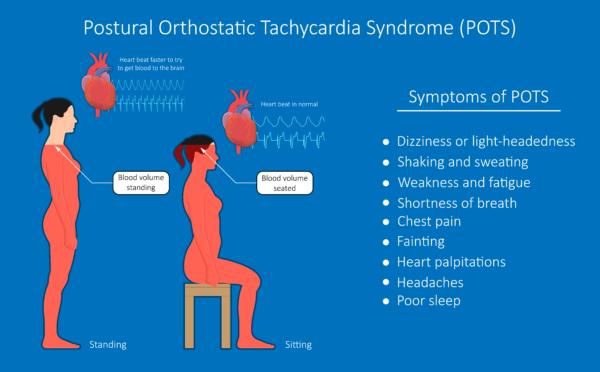This article was copied and pasted from my electronic subscription to the Epoch Times. Subscribe for $1 for two months and $9.99 a month afterwards, cancel anytime: https://subscribe.theepochtimes.com/p/?page=digitalsu
Blue Legs: A New Long-COVID Symptom; How to Test for and Treat It
Updated:
It started with an uncomfortable tingling and itchiness in his legs after standing for 10 minutes. Then, the he watched as his lower limbs turned blue right before his eyes. He was experiencing acrocyanosis, a pooling of blood in the extremities that had never afflicted him before.
POTS and Long COVID
The anonymous patient had already been diagnosed with postural orthostatic tachycardia syndrome (POTS)—a form of dysautonomia for which reddish-blue discoloration of the legs can be a symptom—two months earlier by a cardiologist. POTS is a blood circulation disorder that causes an abnormal increase in heart rate when transitioning from sitting or lying down to standing up, which can also lead to lightheadedness, fainting, and fatigue.
POTS is a relatively uncommon condition, affecting an estimated 500,000 to 1 million people in the United States. It is most commonly diagnosed in women between 15 and 50 but can occur in people of any age and sex.

There is no known cure for POTS, but doctors may prescribe medications to help manage symptoms, such as beta blockers, fludrocortisone, and midodrine.
Nearly 2 in 3 People With Long COVID Experience Autonomic Dysfunction
About 28 percent of people infected with COVID-19 develop long-COVID symptoms, according to a survey by the KFF, formerly known as the Kaiser Family Foundation, a health policy research organization. For the majority, the symptoms clear up, but 11 percent are left with persistent long COVID.
A separate online survey of over 2,300 adults with long COVID found that 67 percent had moderate to severe autonomic nervous system dysfunction. This was unrelated to the severity of their initial COVID-19 illness, suggesting autonomic dysfunction is highly prevalent in long-COVID patients. This may be due to COVID-19’s effect on a vital part of the nervous system.
“Extensive research has shown that long COVID causes malfunction of the key almond-size circuit breaker in the brain called the hypothalamus,” Dr. Jacob Teitelbaum, a board-certified internist and nationally known expert in the fields of chronic fatigue syndrome, fibromyalgia, sleep, and pain, told The Epoch Times. The hypothalamus not only controls the autonomic nervous system functions but also sleep and hormone regulation.
Without treatment, there is a risk autonomic dysfunction can become progressive, Dr. Teitelbaum said. “Other key parts of the autonomic nervous system can begin to fail along with the hypothalamus,” he added. “These include, especially, the vagus nerve and the nerve fibers that control blood vessels. The latter is called small fiber neuropathy.”
How to Screen for and Treat POTS at Home
Dr. Teitelbaum described a simple at-home test to check for symptoms of POTS.
First, lie down for 10 minutes and check your pulse rate. Then, stand up in one place for 10 minutes, without leaning on anything, while checking your pulse every two minutes.
If your pulse rate rises by 20 beats per minute or more during the 10 minutes of standing, it indicates orthostatic intolerance, he said.
“However, if your pulse rate goes up by 30 bpm or more, [the test] confirms [POTS].”
If signs of POTS are detected, Dr. Teitelbaum recommends self-care approaches to relieve symptoms. Treatment for POTS in long-COVID patients is similar to treatment for non-COVID POTS cases, typically involving lifestyle changes and medications.
Helpful lifestyle changes can include moderate physical activity and avoiding triggers that worsen symptoms. Wearing medium compression stockings when up and around, along with increased salt and water intake, are simple at-home treatments, according to Dr. Teitelbaum.
“Knee-high compression stockings can help, but thigh-high ones are better,” he added.



